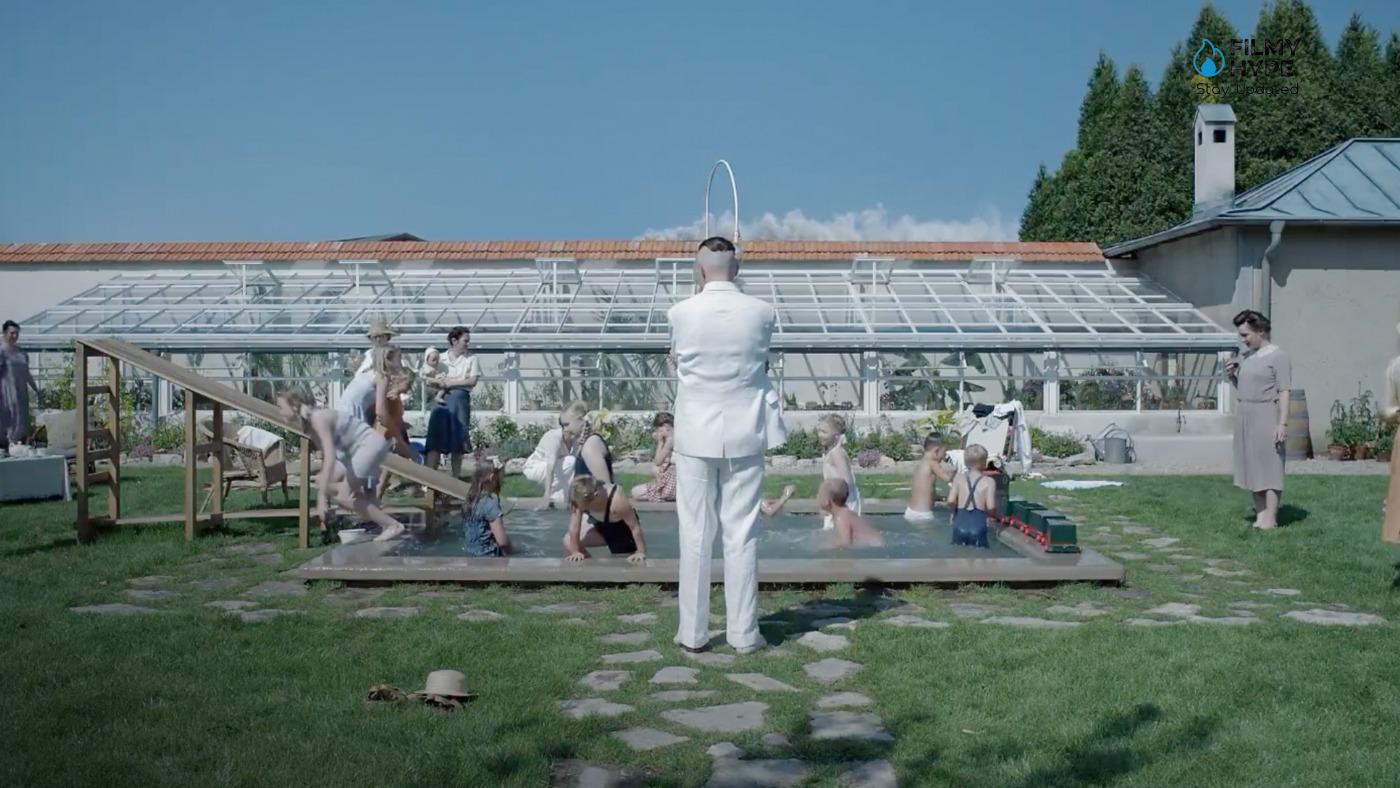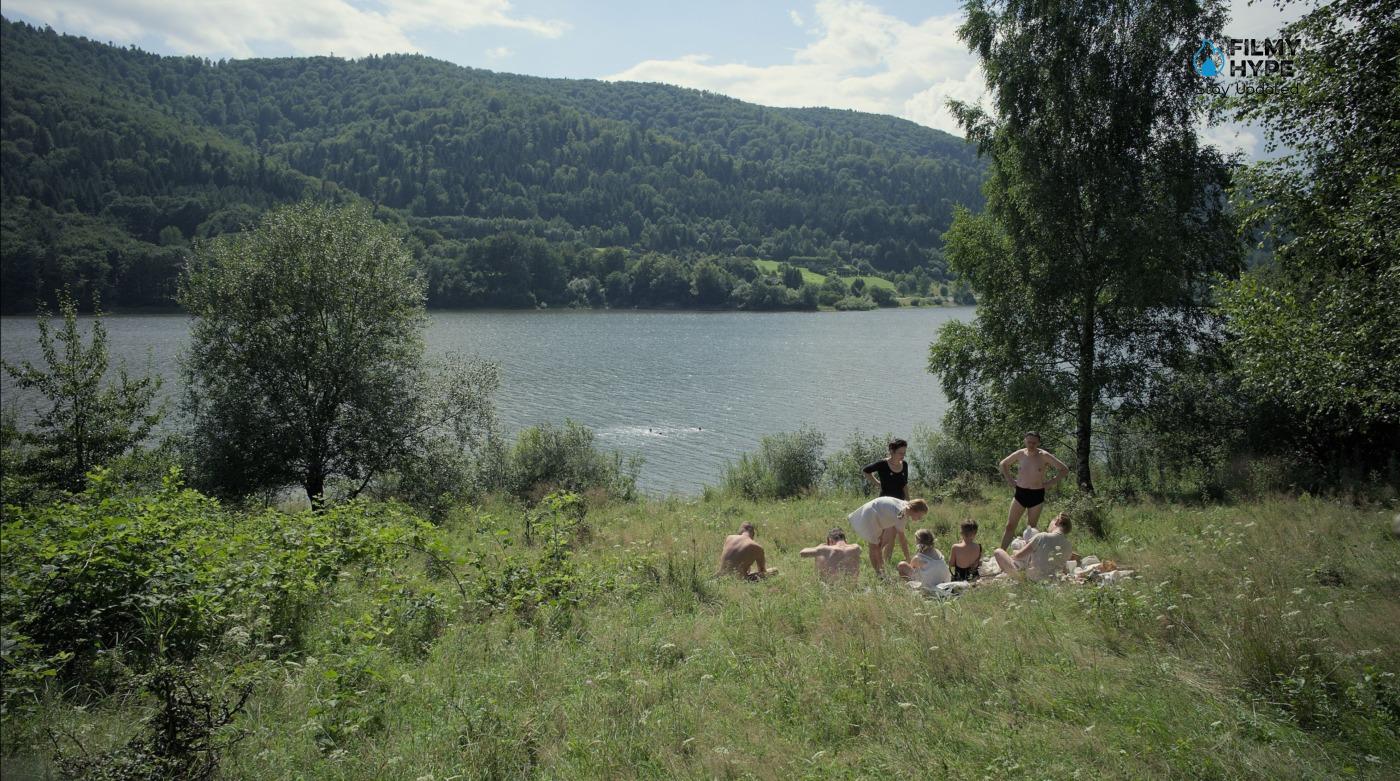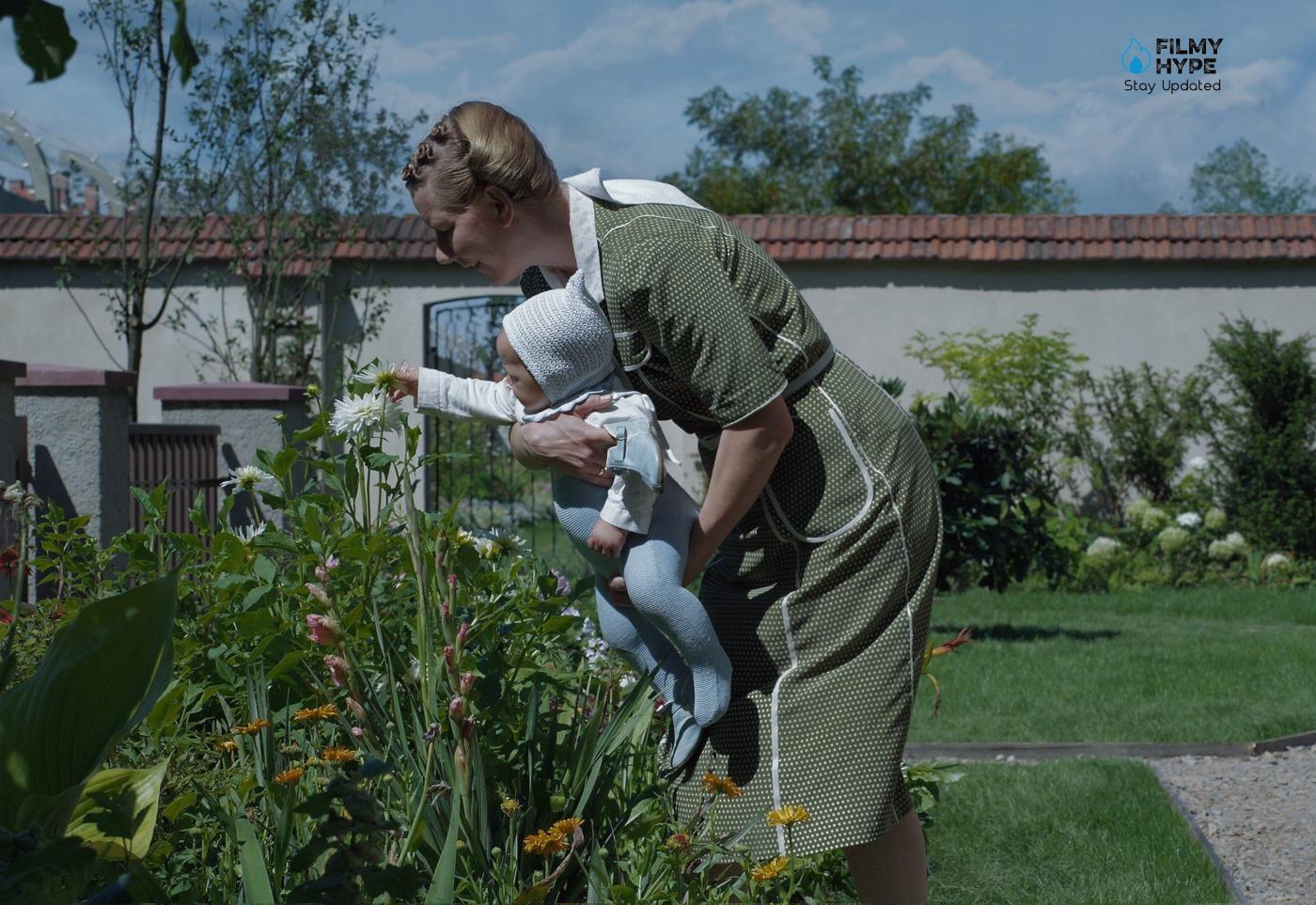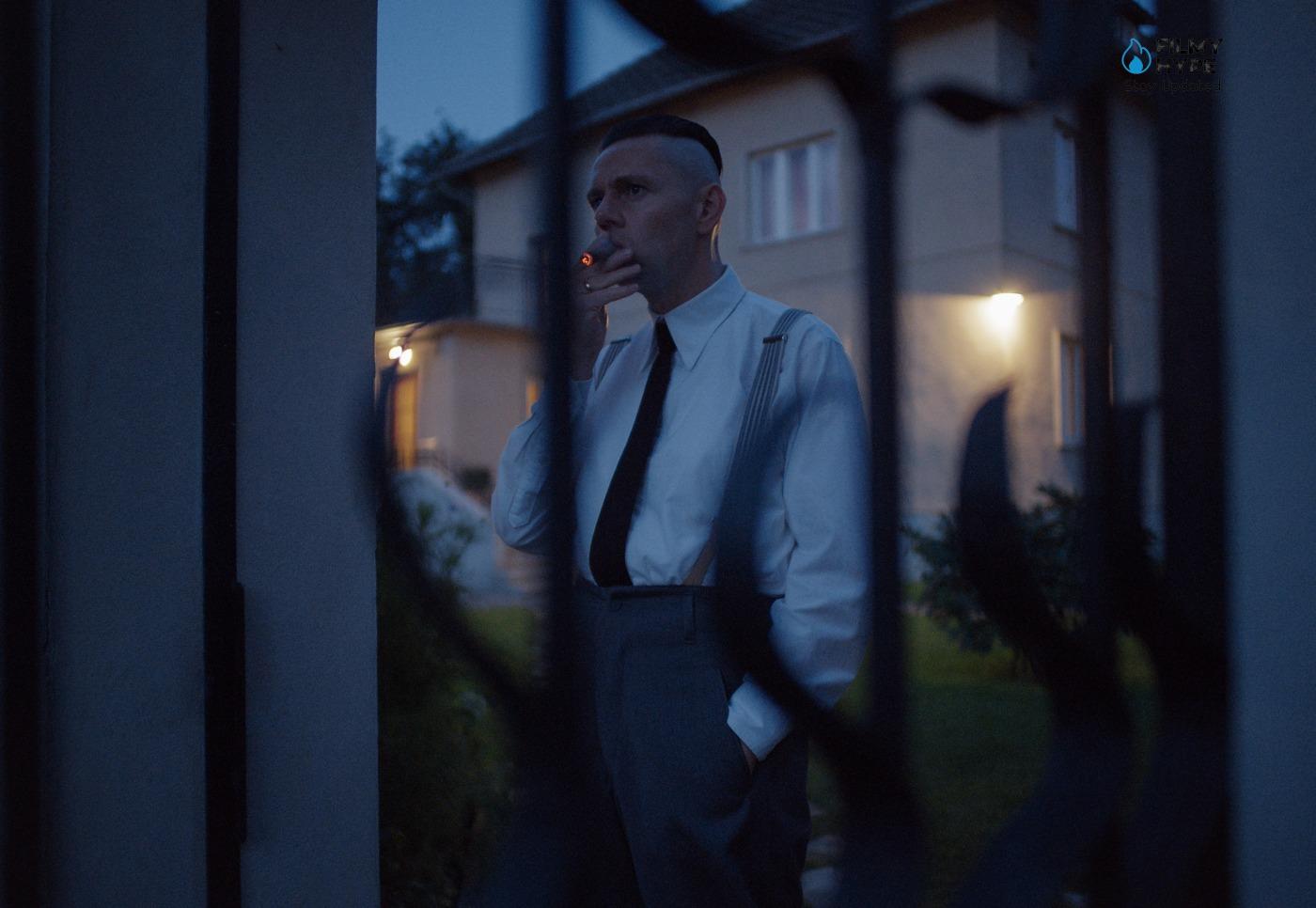The Zone of Interest Review: The Evil That Cannot Be Seen Bringing Us Into The Banality Of Evil As Never Before
Stars: Christian Friedel, Sandra Hüller, Johann Karthaus
Director: Jonathan Glazer
Where to Watch: In Theaters
Filmyhype.com Ratings: 5/5 (five stars)
The Zone of Interest is a film written and directed by Jonathan Glazer, already known for the acclaimed and controversial Under the Skin (2013) starring Scarlett Johansson. There is a saying when it comes to torture devices: the imagination of the pain you are about to experience is worse than the pain itself. And therefore, the victim, if subjected to interrogation, will speak more easily only by depicting what is about to happen to him. This is what Jonathan Glazer does with The Zone of Interest: we can perfectly imagine what is happening, we don’t need to see it. The cinematic effect created by the British director is so aseptic in its daily wickedness that it makes us grow inside a retch full of nauseating disgust that is impossible to ignore. It is the key theme of The Zone of Interest a film awarded the Grand Prix at the 2023 Cannes Film Festival, which had its Italian premiere at the 18th edition of the Rome Film Festival and will be released in cinemas on February 22.

Jonathan Glazer directs it, his fourth film in just over twenty years, and also writes it based on the novel of the same name by Martin Amis. At the center are Rudolf Höss (Christian Friedel), the real commander of Auschwitz during the years of Nazi Germany, and his wife Hedwig (Sandra Hüller). Both live with their children in a family house adjacent to the entrance gate of the extermination camp. They have large rooms, a large greenhouse, and a large garden in which Hedwig works vigorously to make it as welcoming and lush as possible. It’s their little Eden. And here lies the assumption from which the director starts, and which becomes the backbone of his work. Of a tragedy like that of the systemic genocide committed against the Jewish people, is there still a need to show something? Or rather: in an era in which the image is no longer able to significantly permeate under the epidermis of an already saturated and anesthetized unconscious, is the visual representation of trauma the most adequate form of reflection? Then Glazer does something simple but with a disturbing argumentative force.
The Zone of Interest Review: The Story Plot
The film tells the story of Rudolf Höss (Christian Friedel), a member of the SS, who lives with his wife Hedwig (Sandra Hüller) and their five children in a beautiful house with a garden, where they raise the children to life outdoors and love grow flowers. The house is next to the Auschwitz camp where Höss goes to work every morning, being the commandant of the concentration camp. The Zone of Interest is the one in which they live, which historically encompasses twenty-five miles around the land. That’s all. Almost. In the idea of staging Commander Rudolf Höss, the one who established the construction of Auschwitz as we know it, including the introduction of Zyklon B gas into the gas chambers, there is a radical choice: never to show the inside of the field. Filming with natural light, and positioning the lenses in the Höss residence, house, and garden, the staging allows the characters to move freely within the shots, making them move just as if they were at home.
Thus, as in an installation, we are taken around the family’s routine, which takes place without any particular shocks, one step away from the genocide, which always remains out of view. The banality of evil, then. But there’s more and more. Family members engage in daily activities such as eating breakfast, prepared by their servants, trying out make-up, choosing the most attractive clothes that are delivered, and growing roses. The husband discusses with his colleagues the projects, depicted in drawings and diagrams, for the efficiency of an industrial reality treated like a factory. The wife, for her part, as soon as the possibility of leaving that Edenic environment for a move emerges, protests, and demands to stay there, the little ones are too happy in the open air.
And the children play, like all children. They are a normal family, that’s the point, and that’s why we go beyond the Arendtian definition: there is no banality of evil, in their minds, there is only the normality of the execution. And here we return to Luke Holland’s disconcerting documentary, to the true voices of those responsible: because there is something that is sabotaging the placid tranquility of the family. It could be a visual sign of smoking or a noise in the night. The horror cannot be seen, but it can be heard and smelled. That’s right: that sweet smell reported by the old Nazi permeates The Zone of Interest, which becomes a sort of smell of Evil. What we don’t see takes on devastating force and we smell it in every frame: we look carefully in front, behind, to the side of the characters to catch a sign of horror. Like in ghost films where you have to find the ghosts hidden in the frame. The unspeakable is found on the second and third floors. The off-screen is more devastating than any plausible representation of extermination.

Film4)
Jonathan Glazer weaves an underground and terrible dialogue between the normality of the family and the abnormality of the genocide beyond the wall: an example for everyone, in the house they complain about the food while outside they die of hunger reduced to human skeletons, even if we don’t see it, but it is already metabolized in our visual memory. The director himself inserts some graphic clues which are ethical acts: a fade to red, the recurring dream of a little girl planting apples in the work fields, filmed with a thermal camera to obtain a negative image, the only one that Good can obtain. However, awareness is only in the direction, that is, in the politics of language: the people on the screen propose a moral suspension, they do not ask themselves the problem, therefore they adhere to the horror.
In the final ellipses we find Höss dealing with the regime’s bureaucracy, and here comes a sudden museumification, constructed in an anti-rhetorical way. The objects belonging to the victims are on display today. Höss is shocked by a retching, but he does not “come to light”, but rather disappears into the darkness: black is the only possible fade. The Zone of Interest crumbles the rhetoric of films about the Shoah, and at the same time poses a cinematic question, an optical doubt: not seeing is seeing the abyss. For those who were wondering after the screening, it is also a film that speaks to us, we are also the ones who live close to the massacre, and it is also our fault. It is one of the greatest films ever made about the Holocaust, rather than about the Holocaust, that is, about epochal tragedies: one of these is the tragedy of not wanting to see.
The Zone of Interest Review and Analysis
And how could we not watch with Jonathan Glazer’s hand over his eyes? It’s almost difficult to describe the perfect fit between Glazer’s direction and the narrative of The Zone of Interest. Everything is fragmented into watertight compartments, caustic in the most cauterizing sense of the term like wounds that memory has oxidized but is still there, behind a curtain that hides a chimney, or a shower closed because it dripped water while hundreds and hundreds were opened beyond a simple wall. Jonathan Glazer’s directorial perfection goes back to the dawn of cinema, to the cognitive phenomena of editing, like many Kulesov Effects constructed in the same shot, between exterminating shot and reverse shot. The camera moves very little, everything is broken up into banal repetitions of life, while around the corner one of the greatest tragedies of which humanity has been capable is being planned and carried out.
And it is here that Mica Levi’s sound bursts in, the true connection between the two areas divided by the wall, which together with the visual fragments reminds us without the need to show what is happening, but with a sharp delicacy that opens our eyes halfway with very few notes. Sometimes we wonder if and how it is possible to find a new way to tell the atavistic horror of the Holocaust after cinema has done it in every possible way. The Zone of Interest is the answer to this question because it takes a step even further while remaining behind, it builds in our stomach a disturbing sense of nausea that we have to deal with shot after shot, paced like a calm march towards evil. Jonathan Glazer manages to do all this without really showing anything, just what happened on the other side of the wall, and in doing so he achieves such a dazzling effect that he delivers our sight to the colors and their deprivation that stand out on the screen, a true monolith that we can’t stop watching.
This is also thanks to Sandra Huller and Christian Friedel, Hedwig and Rudolf, the common people who became ordinary murderers and ordinary accomplices, in the exterminating indifference that has forever marked the entire world (we also leave you our review of Anatomy of a Fall with Sandra Huller protagonist). But History does not condone the silent scene, and Jonathan Glazer knows this very well, swallowing Rudolf and in a broader sense everyone, to remind us of those who continued his life as if nothing had happened during the extermination of a people. Because once again we must remember this so that a genocide is not repeated amidst general indifference. Any genocide. In Nazi jargon, The Zone of Interest is a neutral term used to indicate the area immediately surrounding a concentration camp, where German generals and SS typically used to live.

Film4)
Very often it was only a wall that divided the lives of the families of the soldiers from those of the prisoners in the camps, and it is around this physical barrier that Glazer decides to build the narrative of his film, far from any evidence of the pain created up until now in the cinema dedicated to the theme. When the story opens to the viewer, a black screen absorbs everything and for a few minutes, only atonal music can be heard, which slowly transforms into the chirping of birds and the rustling of plants that envelop the first scene of the film, in which it slowly appears the Höss family intent on having a picnic by the lake. Glazer immediately clarifies the double track on which the film will move, which plays with sounds and opposes them to images, creating a doubling between the film that is observed and the one that is listened to. It is through the relationship between images and sounds that the cognitive dissonance that is the protagonist of the story emerges: the one that pervades the family of Commander Höss, head of the Auschwitz concentration camp, intent on enjoying a perfect life while in darkness invisible, the atrocities of war take place around it.
The Zone of Interest thus becomes the uncontaminated space far from death, where the banality of life reigns supreme and the passage of time seems to slow down in the sea of domestic chores of Hedwig, the commander’s wife, a woman completely detached from the reality that makes her stay in the camp is a question of principle and pride. Even the cruelty of Höss’s actions is hidden by the geometric perfection of the scenes, by the interlocking actions that are repeated in the perimeter of the family estate, and by the moments of leisure and play experienced with his children and wife. But what you don’t see with your eyes you hear with your ears and the sounds that shake the film constantly clash with the mise-en-scène, creating continuous cracks and gray areas that bring the viewer back to reality, demonstrating how easy it is to get distracted and fall into the banality of evil.
Without needing to show anything Glazer manages to play with the audience’s imagination, capable of recreating that missing part of the story even just by listening to the distant screams of the deportees off-screen, through the heavy music that presses like a presence in the scene, from the sound of the crematorium ovens which continues incessantly even in the toneless silence of the night. The same monochrome scenes completely submerge the viewer, making him a participant in the cruelty that hides behind the wall that divides death from life. In fact, like the sound, the image also becomes the spokesperson for clear messages from the first scenes: if the German point of view appears sovereign in the story, geometric in the shots, clean, impeccable in the movements and words; those who act in good faith do so in the night, unrecognizable because they are comparable to anyone and with the same value as anyone, like the other invisible faces that populate the imaginary hidden from view of the film.

Film4)
The real protagonists are therefore not the Hüllers, analyzed as pawns from above, shown through the corners of the house as if by hidden cameras that immediately judge life to be empty and unreal; but those discordant elements that bring the mind back to reality and question every scene, gradually increasing the gravity of the story: the shots of the rifles, the red that lights up the windows in the night, the dirt on the clothes and under the boots of the Germans, death treated like simple dust that dirty clothes hung out to dry. Glazer’s work then appears to be even more fundamental if we think of it about the new ultra-documented pains of our contemporary world – such as the rekindling of the Israeli-Palestinian conflict, in the wake of a year and a half of media bombardment on the war between Russia and Ukraine. A lucid and chilling treatment of the state of the relationship between us and the bulimic enjoyment we make, or want to make, of torment. A film destined to remain as a cornerstone on which our past, our present, and our future converge.
The Zone of Interest Review: The Last Words
The Zone of Interest is one of the best films ever made about the Holocaust, but it is also yet another confirmation of Jonathan Glazer’s astonishing directorial mastery, which tells the daily banality of evil as we have never seen before. The life of the family of Rudolf Hoss, commander of Auschwitz, flows as if nothing had happened, living attached to the concentration camp. The spectator is forced to watch a daily drip of random moments with the background of extermination making its way into his eyes, with the darkness ready to swallow up the complicit indifference in the face of genocide. The film has been in theaters since February 22nd, distributed by I Wonder Pictures, and has been nominated for five Oscars. Once again Glazer demonstrates a unique and complex style, capable of overturning the point of view of the narrative without losing sight of the true theme of the story.

The Zone of Interest Review: The Evil That Cannot Be Seen Bringing Us Into The Banality Of Evil As Never Before | Filmyhype

Director: Jonathan Glazer
Date Created: 2024-02-23 14:01
5
Pros
- Impeccable work on the sound
- An assembly capable of creating scenes of great visual impact
- Acting reduced to a minimum but perfect
Cons
- None


